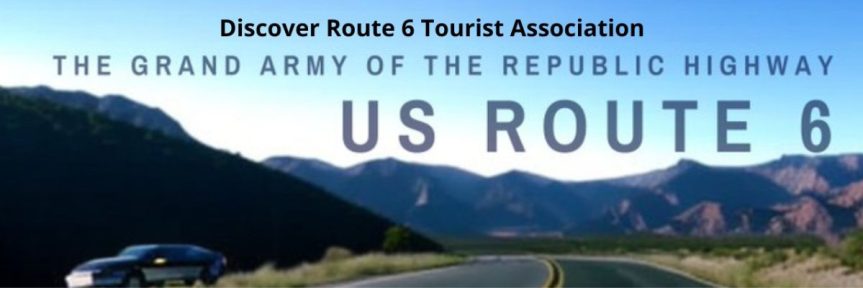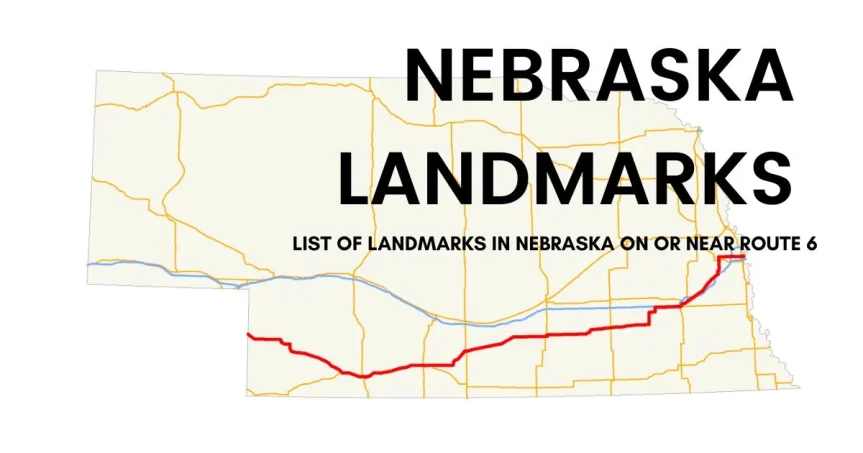Introduction
McCook Nebraska may seem like a small dot on the map, but it holds a rich connection to one of America’s most historic highways—Route 6. This charming town nestled in the heart of Red Willow County is more than just a pit stop; it’s a treasure trove of history and culture waiting to be explored. Whether you’re a travel enthusiast, a local explorer, or a history buff, McCook offers a unique experience that bridges the past and present along one of the country’s oldest and longest highways.
In this Route 6 Happenings post, we’ll take a deep dive into the relationship between McCook and Route 6. From its historical roots to its modern-day attractions, you’ll discover why this quaint town is a must-visit destination. We’ll also explore how Route 6 has shaped McCook’s identity and economy, while offering practical tips for your next visit. Buckle up as we hit the road to uncover the fascinating story of McCook, Nebraska, and Route 6.
The History of Route 6
Route 6, also known as the “Grand Army of the Republic Highway,” holds a special place in American transportation history. Established in 1926, this transcontinental highway originally stretched from Provincetown, Massachusetts, to Long Beach, California, covering nearly 3,652 miles. It was the longest highway in the United States at the time, and it played a crucial role in connecting the East Coast to the West Coast.
The highway gets its name from the Grand Army of the Republic, an organization of Union veterans from the Civil War. This name symbolizes not just a physical route but also a tribute to the soldiers who fought to preserve the nation. Over the years, Route 6 has been a lifeline for commerce, tourism, and everyday travel, weaving through bustling cities and quiet towns alike.
The significance of Route 6 goes beyond just transportation. It represents a slice of Americana, capturing the spirit of adventure and exploration. Many travelers have traversed this highway, discovering the diverse landscapes and cultures that make up the United States. Today, while many parts of Route 6 have been bypassed by modern interstates, the highway still retains its historic charm, attracting those who seek to relive the golden age of American road trips.
McCook’s Role in Route 6
McCook, Nebraska, holds a unique position along Route 6. This town became a focal point not just by geographical happenstance but through a series of historical events and developments that tied it intrinsically to the highway. McCook’s strategic location made it an essential stopover for travelers and a hub for commerce and trade.
One of the town’s most notable landmarks is the historic Keystone Hotel, which has stood as a testament to McCook’s vibrant past. Built in 1929, the hotel served as a luxurious resting spot for travelers navigating Route 6. Today, it remains a symbol of the town’s rich heritage and its enduring connection to the highway.
Another significant attraction is the Frank Lloyd Wright Sutton House, an architectural marvel that draws many visitors. The house was designed by the iconic architect Frank Lloyd Wright and built in 1905. It showcases Wright’s Prairie School architectural style and adds a touch of cultural significance to the town. The house is open for tours, offering a glimpse into early 20th-century design and lifestyle.
McCook’s connection to Route 6 is also marked by the Red Willow County Historical Museum. Located in the old Carnegie Library building, the museum houses a collection of artifacts and exhibits that tell the story of the town and its role in the broader tapestry of Route 6. From vintage photographs to historical documents, the museum provides valuable insights into how McCook has evolved over the years.
Experiencing McCook and Route 6 Today
Visiting McCook today offers a unique blend of historical exploration and modern conveniences. Whether you’re embarking on a cross-country road trip or just looking for a weekend getaway, McCook has something for everyone.
Start your day with a delicious breakfast at Sehnert’s Bakery and Bieroc Café. Known for its freshly baked goods and hearty meals, this local favorite is the perfect spot to fuel up before you start your adventure. Be sure to try their famous kolaches—a sweet pastry that’s a hit among both locals and tourists.
After breakfast, take a stroll along Norris Avenue, the town’s main thoroughfare. Here, you’ll find a variety of shops, boutiques, and galleries that offer unique souvenirs and locally made products. Don’t miss the chance to visit the Prairie Chicken Sculpture, a quirky landmark that pays homage to Nebraska’s native wildlife.
If you’re a nature enthusiast, head over to Kelley Park. This scenic park offers walking trails, picnic areas, and a lovely pond where you can relax and enjoy the great outdoors. It’s a wonderful spot to take a break and soak in the beauty of McCook.
For lunch, consider stopping by The Loop Brewing Company. This local brewery offers a fantastic selection of craft beers and a mouth-watering menu that includes burgers, pizzas, and more. It’s the perfect place to unwind and enjoy some local flavors.
End your day with a visit to the Fox Theatre McCook, a beautifully restored historic theater that hosts a variety of events, from movies to live performances. It’s a great way to cap off your visit and experience a piece of McCook’s cultural heritage.
The Legacy and Future of McCook and Route 6
The legacy of Route 6 in McCook is not just a thing of the past—it continues to shape the town’s future. The highway has played a vital role in boosting the local economy by attracting tourists and fostering community development. Many local businesses thrive thanks to the steady stream of visitors traveling along Route 6.
Efforts to preserve and promote the historical significance of Route 6 are ongoing. The McCook Chamber of Commerce and other local organizations actively work to maintain the town’s heritage while also promoting modern amenities and attractions. These efforts ensure that McCook remains a vibrant destination for future generations.
One notable initiative is the annual Heritage Days Festival, which celebrates McCook’s rich history and its connection to Route 6. The festival features parades, live music, food vendors, and various activities that bring the community together. It’s a wonderful opportunity for residents and visitors alike to celebrate the town’s heritage and enjoy a fun-filled weekend.
Looking ahead, McCook is poised to continue its growth as a key destination along Route 6. With ongoing investments in infrastructure and tourism, the town aims to attract even more visitors and provide them with a memorable experience. The future of McCook and Route 6 is bright, promising continued prosperity and cultural enrichment.
Conclusion
McCook, Nebraska, and Route 6 share a unique and enduring relationship that has shaped both the town and the highway. From its historical roots to its modern-day attractions, McCook stands as a testament to the enduring legacy of Route 6. Whether you’re a travel enthusiast, a local explorer, or a history buff, McCook offers a wealth of experiences that highlight the best of American history and culture.
We encourage you to visit McCook and experience the charm of this historical route firsthand. Explore its landmarks, enjoy its local flavors, and immerse yourself in its rich heritage. Share your experiences with us and help keep the spirit of Route 6 alive. Your adventure awaits!
Thank you for joining us on this journey through McCook, Nebraska, and Route 6. We hope to see you on the road soon!



